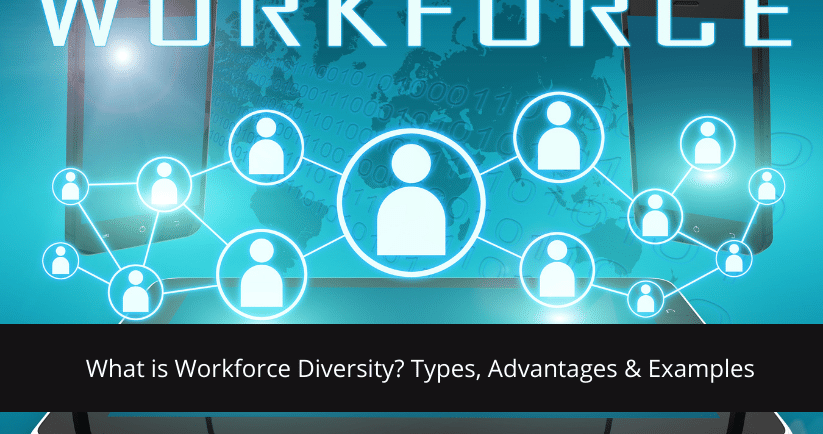Since globalization has affected our lives, labor market is no exception. An amazing blend of workforce diversity can be seen around the globe. A diverse workforce has a great set of benefits for businesses in terms of productivity and efficiency.
How? Read along…
What is Workforce Diversity?
Workplace Diversity refers to the inclusion of personnel from diverse backgrounds such as different races, cultures, religions, sexes, ages, and sexual orientations. It also includes personnel with physical and mental disabilities as they should not be discriminated against under any circumstances.
Workplace diversity aims to eradicate any biased treatment of individuals based on any external factor apart from their work. It helps create a workplace culture of motivated and engaged staff, who would love to continue working in their safe workplace for longer, thereby improving employee retention rate.
What Is Managing Workforce Diversity?
Diversity management is a procedure made to generate and maintain a healthy and positive work atmosphere in offices where sameness and differences are valued in the organization. The meaning of diversity management has greatly been emphasized on its impact on diversity variations, requirements, expectations, and several other critical issues.
The word diversity itself entails several meanings which are along the lines of different religion, race, beliefs, status, gender, age, political beliefs, ethnicity, and other ideologies. Workforce diversity is a term that means exploring these dissimilarities in an open, safe, and nurturing environment.
Diversity management in the workplace is created to make sure that every employee is treated equally so that they can all be their best self and happily contribute their part to the organization’s growth and strength. Managing workplace diversity can present a lot of challenges and hardships for HR managers.
Having said that, these challenges can be resolved if a company makes a serious effort to encourage a more heterogeneous work-atmosphere by encouraging a culture of tolerance, creating strategies to resolve conflicts, and promoting open communication. There are certain tips that can be followed to maintain a proper workforce diversity, such as;
▸Encourage Open Communication
To manage a diverse workforce, companies need to ensure that their employees don’t hesitate to tell what’s on their mind. Safety rules, procedures, policies, and other crucial information should be drafted in a way to overcome cultural and language barriers by using pictures and symbols and translating materials wherever applicable.
▸Treat Every Employee Equally
It is very essential to treat every employee as an individual. Never assume anything about an employee just because he/she is from a different background. Look at every employee and judge them solely on the basis of their merits and demerits rather than judging them from their background.
▸Encourage Diversity Amongst Employees
Create a team or group where employees are from different cultural diversities, this way they can get to know about each other and start to see each other’s sides. If you put employees with similar backgrounds in one team, they will never learn how to adjust.
▸Open-Mindedness
Companies should encourage the employees to realize and understand that any employee should not be judged on the basis of their background, age, etc. but rather on the value that they add to the organization.
▸Hiring
To improve workforce diversity, it is essential to peruse and recruit talents from various backgrounds. Since the HR managers are responsible for short-listing the candidates, it is very important that they should not be bias and short-list candidates based on their talents and skills. If an organization is successful in breaking the bias in the recruiting process, it will have a healthy workforce diversity.
Also Read: HR Management: How to Tackle different types of Employee personalities
Why is Workplace Diversity Important?
Workforce diversity is something that has become very essential nowadays and hence most companies are trying to achieve it. While an organization’s reputation and workforce inclusion are definitely paramount goals worth pursuing, workforce diversity has many other tangible and immediate benefits connected directly to the organization’s bottom-line.
Hence, diversity and inclusion in the workplace are not just a necessity, but also a major competitive advantage. Organizations with a diverse workplace outperform their competitors and achieve great success. Workforce diversity is important for many reasons, some of them are;
1. Different Perspectives
Diversity and inclusion in the workplace give room for different perspectives. As diversity in the workforce means that employees will mostly have different backgrounds and characteristics, they are likely to have different experiences and skills.
Ergo, employees in an organization with more workforce diversity will have insights into various perspectives, which is highly profitable when it comes to strategizing and implementing various business strategies.
2. Faster Problem Solving
When it comes to benefits of workforce diversity, faster problem-solving is one of the most important ones. Employees with different diversity, have different views and experiences, thus they can contribute diverse solutions to any problem. Having a variety of solutions to a problem helps in resolving it faster.
3. Increased Profits
Organizations with a diverse workforce achieve tremendous profits. It helps in making the best decisions quickly, which gives them an enormous advantage over their competitors. Consequently, companies with diverse workplace reap better profits.
4. Reduced Retention
Workforce diversity is very paramount when it comes to retaining employees. Organizations with diversity in the workplace are more open to different perspectives and thoughts. This makes the employees feel valued and heard, which in turn makes them loyal towards the organization and their work.
If an employee is happy with the way he/she is being treated in the company, they will surely stick with the company for the long haul, thus lowering the turnover.
What are Some Examples of Diversity in the Workplace?
The number of factors that define diversity in the workplace is numerous. Throughout an employee’s life, their different background, colour, genetic predispositions, and gender truly change their experience as a person. Thus, when it comes to diversity in the workplace, the examples are many, some of them are;
▸Physical abilities and disabilities
Hiring an employee with any kind of physical disability or experience will not only help your company to create a more diverse environment but also bring unique perspectives and ideas to the table that will help your company in reaching a wider market of clients and customers.
▸Mental health
Employee health is a priority in the HR department, but usually, mental health is left out in these structures. Without the resources and support to understand and help the employee’s needs, there is a high chance that organizations may see an increase in employee absenteeism. To resolve this stigma, nowadays more and more companies are including mental health in their employee benefits program.
▸Cultural background
There are various factors that entail different cultures, including native language, traditional food, customs, and religion. While many people take interest in knowing more about other cultures but are an entirely different scenario to work with colleagues who hail from different cultures on a daily basis.
Cultural differences can bring both, learning about other cultures as well as barriers and challenges amongst employees who are uncomfortable with their co-workers’ culture. Thus, it’s very important for employers to bring diversity in the workplace to educate the employees about cultural differences and make them appreciate and celebrate them.
What are the 4 Types of Workforce Diversity?
There are many things that come into play in a diverse environment, some of these differences can be seen from outside, while some are invisible and just the way a person was born. These prime differences are the grounds on which the four different types of workforce diversity was created, which are as follows;
1. Internal Diversity
Internal diversity traits are something that can’t be changed as a person is born into it. These are the characteristics that an individual did not choose for themselves and can’t be changed by anyone. Some examples of internal diversity are sexual orientation, religion, mental and physical ability, nationality, ethnicity, age, etc.
2. External Diversity
In the terms of workforce diversity, the word external is used to relate to characteristics that an individual wasn’t born with. It is usually an influential kind that people pick up from their surroundings.
Since a person is not born with it, this diversity can certainly be changed if a person wants to. Examples of this type of workforce diversity are education, personal interests, appearance, relationship or familial status, religious or political beliefs, citizenship, etc.
3. Organizational Diversity
Also known as functional diversity, it refers to the dissimilarities between individuals that are assigned to them by their companies- substantially these are the attributes within an office that distinguishes every employee.
Regardless of what your job role is or what you get paid, any kind of work that you do connects you to your company. The different subsets of this include seniority, pay time, management status, place of work, etc.
4. Worldview Diversity
The last type is called worldview diversity and includes internal, external, and organizational diversity altogether. Some examples are- outlook on life, moral compass, political beliefs, etc.
Advantages of a Diverse Workforce
▸Increased Creativity
One of the benefits of diversity in workplace is that it boosts the creativity of the employees. It is said that sameness breeds sameness. If you keep hiring heterogeneously, that is, every employee hails from similar background, culture, socio-economic situation, same perspective, etc.
then you are limiting the room for innovation and creativity. On the other hand, if you hire employees from diverse backgrounds, they will have diverse and different approaches to achieve the company’s goal.
▸Increased Productivity
There’s a well-known jargon- workplace diversity not only enhances creativity but also productivity. And this is because creativity ultimately leads to productivity. The more diverse cultured employees, the more diverse brainstorming takes place.
▸Enhanced Performance
When a company has a diverse workplace, it helps to make every employee feel included no matter who they are or where they come from. This feeling of being valued and included breaks down all the barriers between an employee and the organization and helps them to raise their voice and share their thoughts and ideas.
▸Diverse Learning Scope
A diverse workforce is contained with employees from different backgrounds, with different skill set, talents, knack, technicality, proficiency and expertise which ultimately crates a platform of exchanged learning among the employees.
A healthy knowledgeable workplace ecosystem not only enhances productivity of the company but also increases the knowledge and exposure of employees to grasp cognizance along with vivid networking.
Thus, creating a diverse workforce with employees from different backgrounds enhances the knowledge of your employees and provide them a healthy working environ to perform productively.
Wrap up!
The idea of workplace diversity is diverse and inclusive in the ecosystem of an organization. Managing diverse employees from different backgrounds is crucial as well as entail.
A more diverse workforce requires diversity policies for streamlined management of diversity in the workplace. For example – There may be differences in terms of opinion, culture, sexual orientation, and more which increases the risk of social dogma in work.
For avoiding such a crisis the management should ensure that the diversity policies and procedures framed by the government and the company itself should be abided by fervently.
Having an inclusive workplace or a diverse workforce of employees not benefits your business technically but also has the potential to enhance the branding of the company which yields to attract the best talents in the market to associate with your organization.
After all, who would not like to associate with a healthy, diverse and inclusive workplace in which the opportunity to learn from a range of people is massive.
Thus, by reading the above blog, it is quite clear as to why workforce diversity is essential for every organization. To read more such blogs click here. You can also write to us at sales@pockethrms.com.








